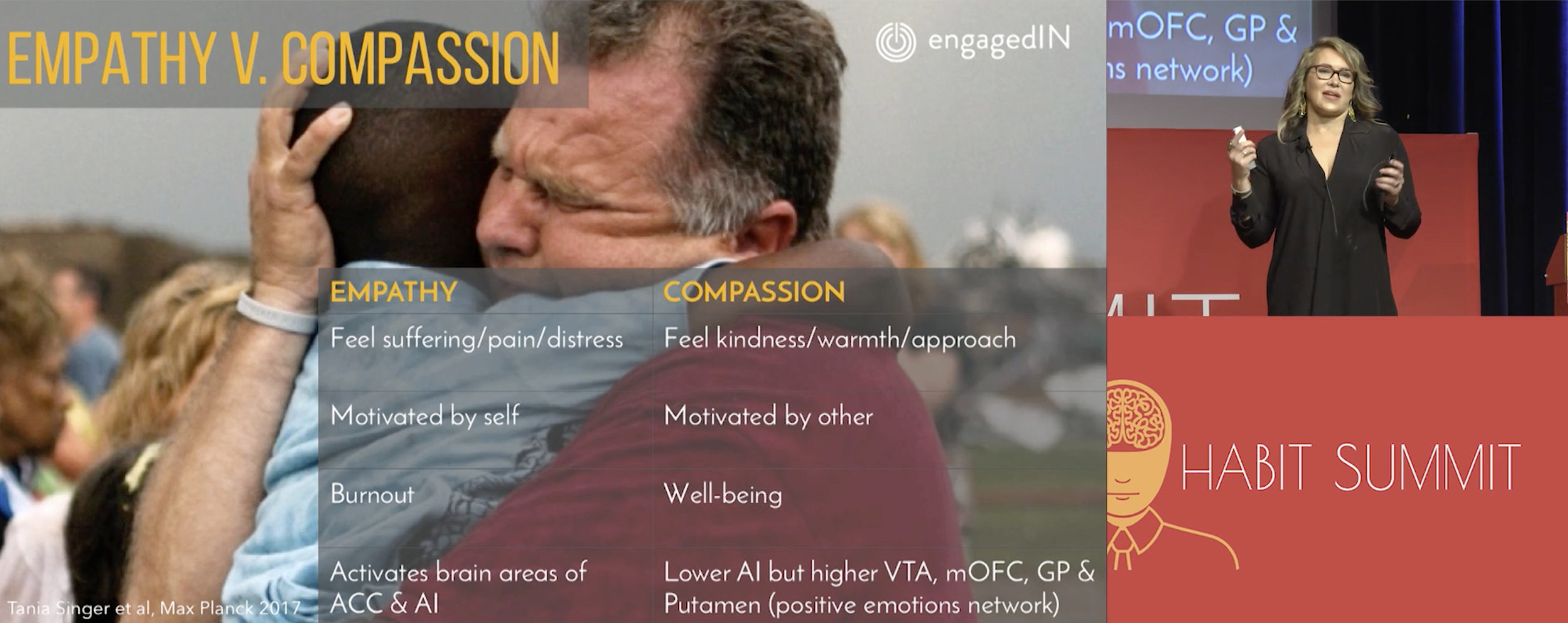We got just back from attending the Habit Summit 2018 conference in San Francisco and feeling enlightened by the experience.
Here are some things we learned from keynote speaker Dr. Kyra Bobinet on her talk – The Neuroscience and Design of Compassion, Trust, and Connection.
This topic highlighted the detrimental effects of isolation and that it is on the rise currently. Here are some eye-opening statistics on why now, more than ever we need to care about behavioural science.
- 1 in 5 college students are depressed or anxious
- “No close friends” has risen 3 x in past decades
- Excessive internet and online social increases loneliness over time
- Loneliness has been tied to 40% of Americans and 50% of CEOs
- The isolated are 2 x likely to die prematurely
- January 2018 England appoints a “Minister of Loneliness”
We also received some good insights into the difference between empathy vs. compassion. Understanding this can be the key insight to better aligning the employee and employer values. This can further drive the attraction and retention of talent & engaging people in their work.

We also delved into the Recipe for Trust (not Cambridge Analytica!) – what makes a brand or a person trustworthy?
Below are the 3 essential ingredients on which design of a brand or workplace environment can benefit from:
EMOTIONAL SAFETY
We should always over prescribe on safety. Safety is not limited to financial and physical safety but in a fact extends to emotional safety. Safety plays and important element in building trust and connections.
CONSISTENCY
How often you do deliver the same result or keep to a promise? There is an inherent expectation for interactions through brands, products and people to be solid, reliable and continuously delivering on promises, this can only be achieved through consistency.
VALUE
Often the value of a product, brand and/or company is perceived as the key index for success whereby emotional safety and consistency are not prioritised. This is can prove to be a flaw in behavioural design.
There is a highly valuable outcome in developing a trusting and compassionate connection between employer and employees in the workplace. A complete understanding of each other’s value can build engaging interactions and improve employee well-being.
Below are results published by the Department of Health & Safety, Ontario Canada on the percentages of 2 types of people in a company.

We can clearly see the misalignment between executives and employees.
This result is apparent from another famous study called the Whitehall population health study (Journal of Epidemiology and Community Health 1978) which was performed over a lifetime period, indicating people with more power and status had 1/3 the death rate than the people with less status and power. The main differentiator here is hierarchy stress.
Another important data point is ostracism. The study by O’Reilly, J. et all, Organisation Science, 2017 found, compared to victims of workplace harassment, people who have reported feeling ostracised were significantly more likely to have suffered health problems and to have ultimately quit their jobs. Most of the time this issue is ignored and can be detrimental to company culture and talent retention.
JUGGLE STRATEGIES KEY TAKEOUTS
Keeping in mind the statistics above and the outcomes of many case studies, it is clear that:
- Businesses benefit from understanding human behaviour as a core consideration of employee productivity and happiness, customer engagement, and business model innovation.
- Organisations need to get a sense of how their team is experiencing work. Their experiences are a key indicator to whether a team is engaged with their work and there is mutual trust, empathy and connection and their working environment is aligned with their values.
- If you are suffering from a stressful working environment, studies have shown that a 90-minute walk can reduce rumination and lowers areas of depression and anxiety. (https://www.pnas.org/content/112/28/8567.abstract)



